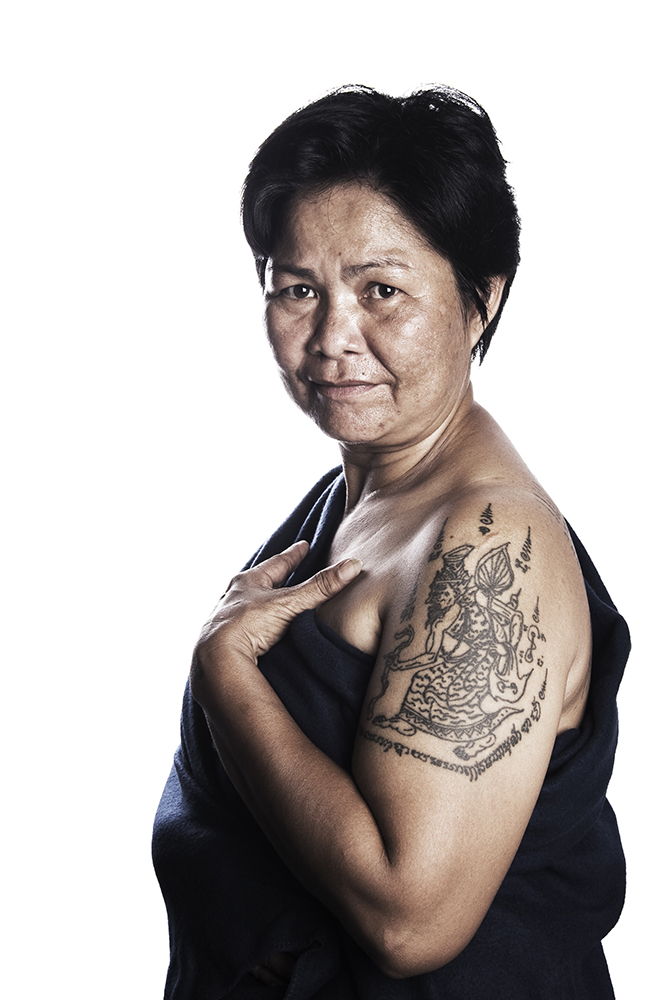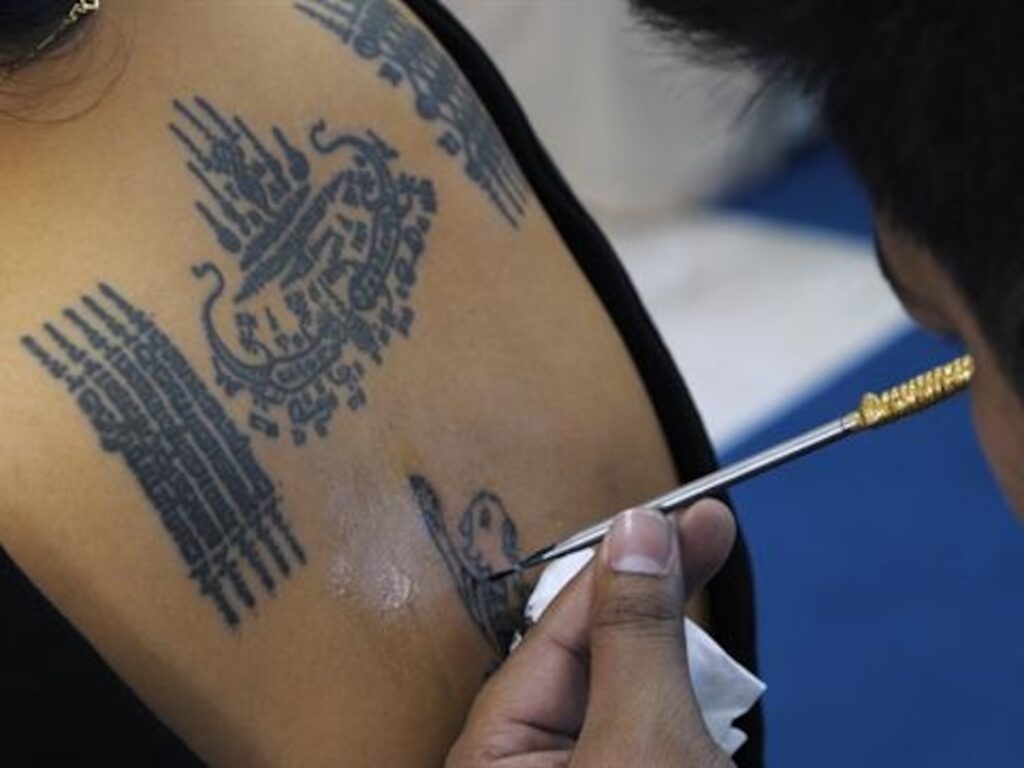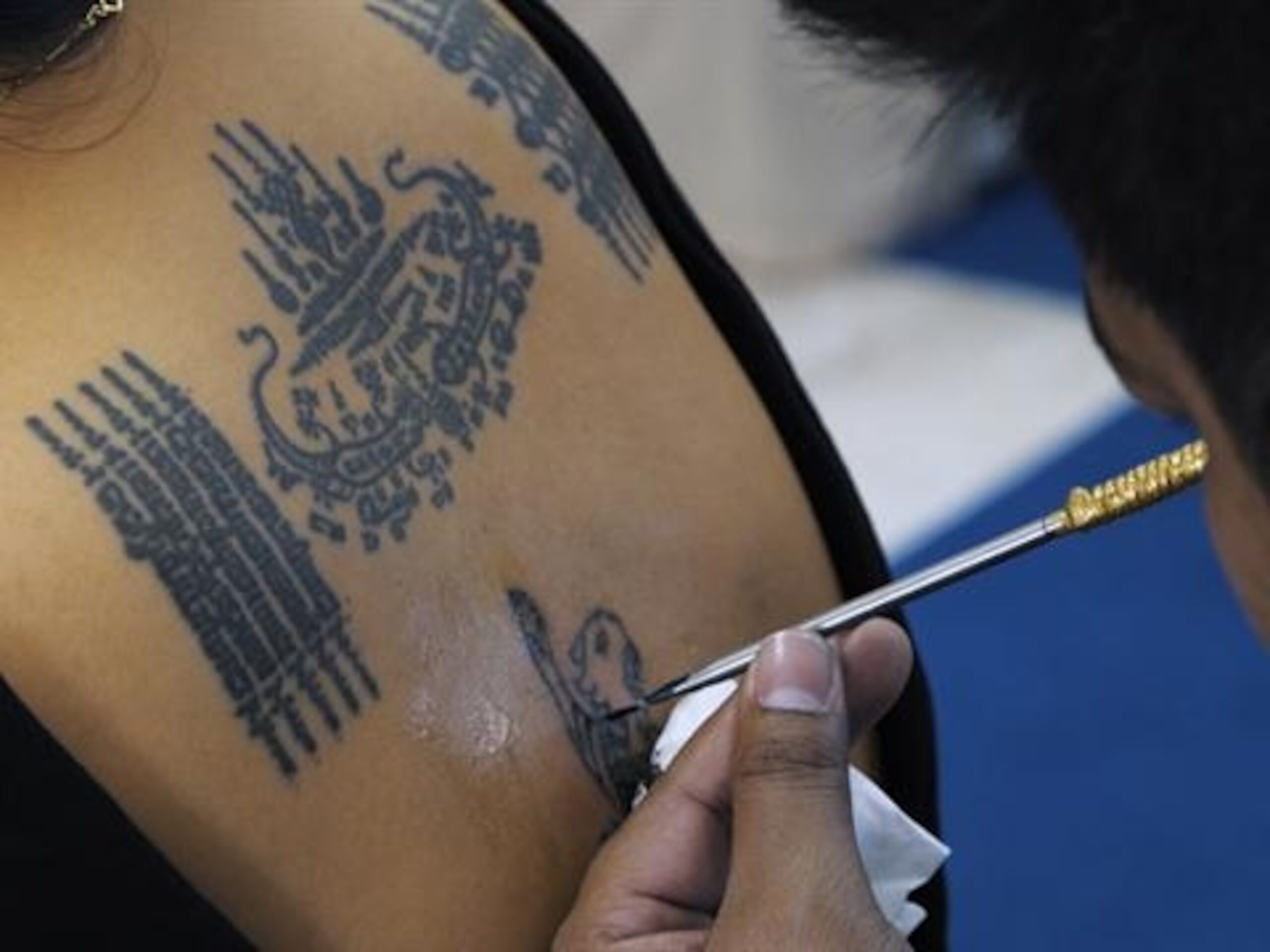Hey there! Let’s embark on a fascinating journey as we explore the rich cultural tapestry of Thailand and dive into the enchanting world of Sak Yant tattoos. Brace yourself for a captivating exploration of this mystical form of body art, which holds a special place in the hearts of locals and has become a magnet for tourists from all over the globe.
As you venture through the vibrant cities of Thailand, you’ll discover an array of tourist attractions that will surely leave you in awe. From the bustling streets of Bangkok to the cultural gems of Chiang Mai and the picturesque beaches of Phuket, this country has it all. But amidst the vibrant tapestry of Thailand’s cultural landscape lies the ancient tradition of Sak Yant tattoos.
These intricate designs hold profound meaning and are believed to possess mystical powers. Embedded in the fabric of Thai culture, Sak Yant tattoos are not merely decorative — they are infused with spirituality. Whether you’re drawn to the protective qualities they are said to offer or simply fascinated by the artistry behind them, the cultural journey of Sak Yant tattoos in Thailand is a truly captivating experience that will leave an indelible mark on your soul.
So pack your bags, immerse yourself in the exquisite flavors of Thai cuisine, and get ready to uncover the hidden depths of Thailand’s cultural heritage through the lens of Sak Yant tattoos.
The Origins of Sak Yant Tattoos
Sak Yant tattoos have a rich history deeply rooted in ancient traditions and spiritual beliefs. These tattoos originated in Thailand and are an integral part of Thai culture. The term “Sak Yant” translates to “tattoo yantra,” indicating the use of mystical geometric designs in the tattoos.
Ancient Traditions and Spiritual Beliefs
The origins of Sak Yant tattoos can be traced back thousands of years to the ancient indigenous tribes of Southeast Asia, particularly in Thailand. These tribes believed in the power of tattooing as a means to protect oneself and enhance spiritual connections. These tattoos were not only seen as decorative symbols but also as powerful tools to ward off evil spirits and bring good fortune.
Influences from Buddhism and Animism
As Buddhism spread across Southeast Asia, it influenced the practices and beliefs surrounding Sak Yant tattoos. Buddhist monks incorporated these sacred designs into their spiritual practices, blending the indigenous animistic beliefs with Buddhist principles. This fusion of spiritual beliefs gave rise to the unique symbolism found in Sak Yant tattoos, combining elements from both Buddhism and animism.
The Role of Monks in Sak Yant Tattooing
Monks play a crucial role in the Sak Yant tattooing process. Known as Ajarns, they are highly respected tattoo masters who possess deep knowledge and expertise in the art of Sak Yant. In traditional practices, individuals seeking a Sak Yant tattoo would visit a temple and consult with an Ajarn who would assess their spiritual needs and determine the appropriate tattoo design. The Ajarn would then perform the tattooing ritual, infused with blessings and incantations, to imbue the tattoo with spiritual power.

Symbolism and Meanings of Sak Yant Tattoos
Sak Yant tattoos are known for their intricate geometric patterns and symbolic representations. These tattoos hold profound meanings and are believed to harness spiritual energy and provide various benefits to the bearer.
The Power of Yantras and Sacred Geometry
Yantras, the mystical geometric designs within Sak Yant tattoos, are believed to hold great power and significance. These intricate patterns are meticulously crafted to generate specific energies and vibrations. Each yantra possesses a unique purpose, ranging from offering protection from harm to attracting prosperity and luck. The intricate interweaving of lines and shapes in these designs creates a powerful visual representation of cosmic harmony and balance.
Representations of Deities and Spiritual Entities
Sak Yant tattoos often incorporate depictions of deities, spirits, and mythical creatures from Thai folklore. These representations are believed to invoke the guidance and protection of these entities. For example, the Hanuman, a monkey deity symbolizing strength and devotion, is a popular choice for those seeking protection. Similarly, the Garuda, a bird-like creature representing power and freedom, is associated with warding off evil spirits and providing spiritual guidance.
Protection, Luck, and Prosperity Symbolism
Sak Yant tattoos are sought after for the array of symbolic meanings they embody. Some designs are specifically geared towards providing protection, acting as spiritual armor against malevolent forces. Others focus on attracting luck and prosperity into one’s life, enhancing financial success, or improving relationships. The intricate combination of symbols and meanings within Sak Yant tattoos offers individuals a deeply personal connection to their spiritual beliefs and intentions.

Traditional Techniques and Rituals
Sak Yant tattoos are traditionally hand-poked using bamboo rods or metal needles. This meticulous process requires exceptional skill and precision, as the Ajarn employs ancient techniques passed down through generations.
Hand-Poked Tattooing Methods
Hand-poked tattooing involves the Ajarn using a bamboo rod or a metal needle to manually puncture the skin, producing intricate designs. This method is preferred for its spiritual significance, as the tattooing process becomes a personal ritual between the Ajarn and the recipient. The slow and deliberate hand-poking technique allows for a deeper connection and spiritual energy transfer.
Blessings and Incantations during the Process
During the Sak Yant tattooing process, the Ajarn performs ceremonial blessings and chants incantations to infuse the tattoo with spiritual power. These blessings are believed to activate the protective and auspicious qualities of the tattoo, creating a strong connection between the bearer and the spiritual realm. The incantations, often in ancient Pali or Sanskrit languages, invoke the energies associated with the tattoo design, empowering the wearer.
Cultural Significance of Bamboo Tattooing
The use of bamboo in Sak Yant tattooing holds cultural significance. Bamboo represents nature’s resilience and flexibility, symbolizing adaptability and spiritual growth. The process of using a bamboo rod allows for a more organic and harmonious experience, connecting the tattooing practice with nature’s rhythms. Its use also reflects the preservation of traditional techniques and the honoring of ancient customs in the face of modernization.

The Role of Ajarns (Tattoo Masters)
Ajarns are the guardians of the Sak Yant tattooing tradition. These tattoo masters dedicate their lives to mastering the art and preserving its cultural heritage.
The Mastery of Sak Yant Tattooing
Becoming an Ajarn requires years of apprenticeship and dedicated practice. Ajarns undergo rigorous training, often within temple compounds, learning the intricate techniques, spiritual philosophies, and ancient rituals associated with Sak Yant tattooing. Mastery of the craft is attained through experience, wisdom, and a deep understanding of the intricate spiritual connections inherent in the tattoos.
Oral Tradition and Passing Down Knowledge
The transmission of knowledge surrounding Sak Yant tattoos is primarily oral, with Ajarns passing down their wisdom and techniques through apprenticeships. This oral tradition ensures the preservation of the sacred rituals, chantings, and tattoo designs. Ajarns not only teach the technical aspects of tattooing but also share the cultural and spiritual significance behind each design, fostering a profound understanding of Sak Yant’s essence.
Finding an Authentic Ajarn
When seeking a Sak Yant tattoo, it is essential to find an authentic and reputable Ajarn. Due to its rising popularity, counterfeit Sak Yant tattoos and unqualified tattoo artists claiming expertise have emerged. To ensure an authentic experience, it is crucial to conduct thorough research, seek recommendations from trusted sources, and engage in respectful communication with potential Ajarns.

